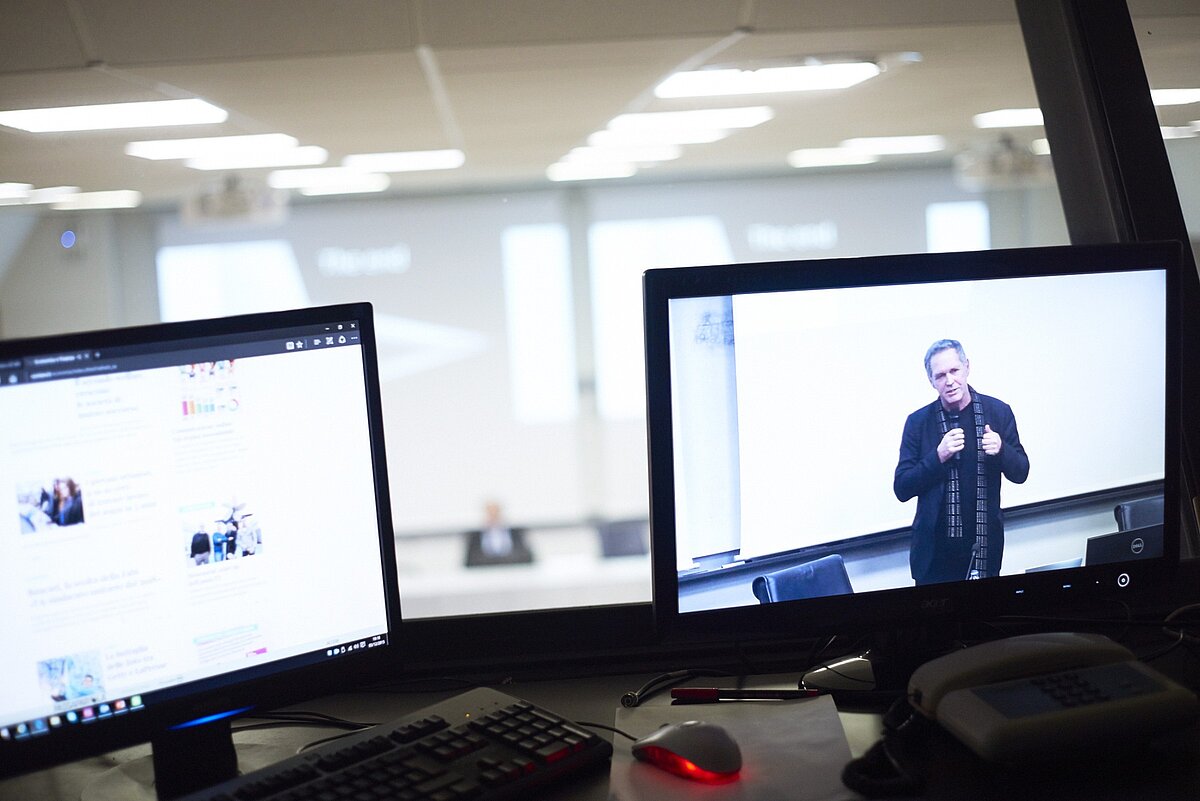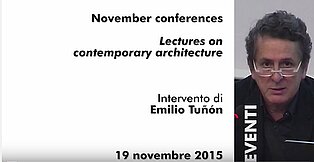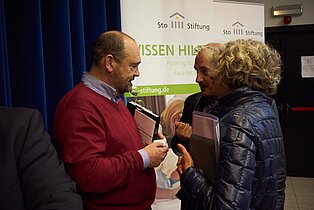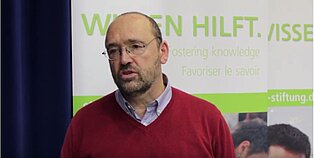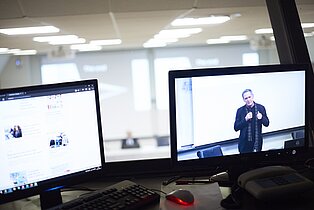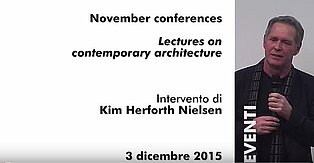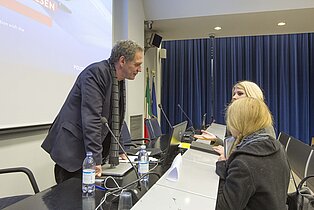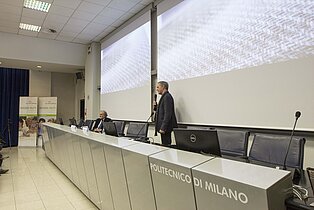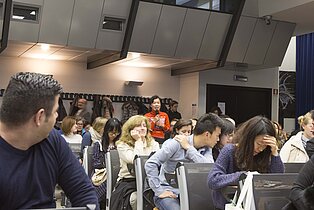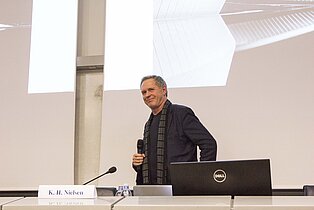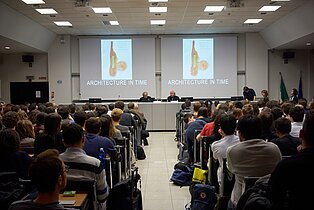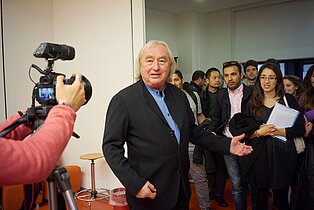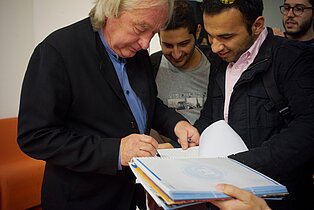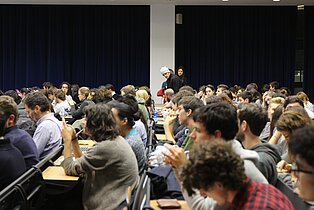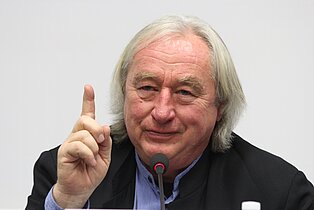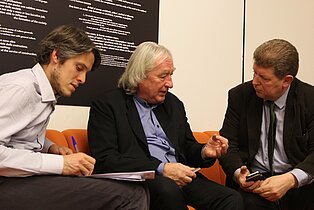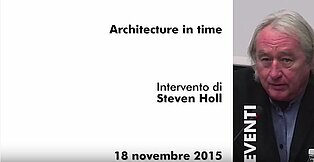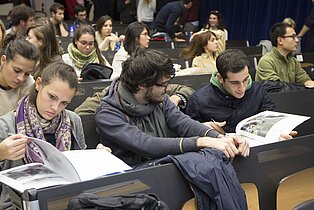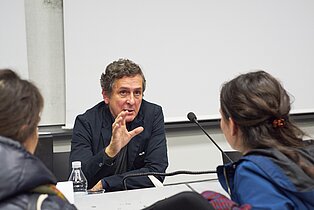Architecture creates behaviours | Kim Herforth Nielsen
The fourth lecture was held by Kim Herforth Nielsen. He explained the philosophy of 3XN. Nielsen stressed the link between science and art that takes them to the next level: thinking of architecture as a way to create spaces and environments, rather than representing single entities inside the cities.
One of the key elements that is always present in 3XN’s iconic architecture is the staircase, introduced to generate interaction between people and functions, exhibited as ornament through light art and coloured materials and elevated as sculpture to foster relations. In these terms, staircases are like catalysers, every time accommodated in different ways to express building identities and reflecting the spirit of the space.
Users’ behaviour is another key of 3XN works. In 2007, the Ørestad Gymnasium designed in Copenhagen set new standards for educational buildings, inspiring open space as metaphor to share knowledge. The public high school is worldwide recognised for the boomerang shape of the stair, which is intertwined between different floors giving birth to a five storey height volume. While outside the volume respects the site perimeter, resulting in a rectangular form, inside the school is a sort of “pile of books” on top of each other that propose a variety of spaces, rooms and functions that merged together remind of an interior city landscape.
For Nielsen “architecture creates behaviours”. So, he started questioning how an architecture can create people’s reactions and their movement inside the space as well. The concept of synergy is exploited in the Stadshuis Nieuwegein (2011) project, where the mixed use building serves to be as a connecting element for the city, before tore into two parts. For this building, 3XN inspiration came from their previous experience. They collected information during the construction of the Ørestad College to construct faster and better. In this building, material envelope and staircase arrangement optimise daylight inside office spaces and restaurants while the articulate exterior shape gave to the city not only a new building to go to, but also a new representative landmark in their built environment.
Embracing context proportions and studying them to design buildings proportioned to the surroundings is for Nielsen one of the most important challenge architects must undergone to achieve the goal. The Middelfart Savings Bank (2010) is a built example of well envisioned scaling effects. The large roof that covers all functions of the block is fragmented by several prefabricates skylights that allow view contacts toward the context and protect indoor spaces from direct solar radiation. The saving bank main element is the rhomboidal shape proposed for elements such as skylights, windows and structures. Ornament and function are merged here into the polygonal pattern, highlighted by Olafur Eliasson mirroring the geometry with kaleidoscopic tubes.
For 3XN inspiration comes in many forms. The new Museum of Liverpool (2011) is inspired by the history of the site and the surrounding buildings. The iconic dynamic structure places itself in between city and landscape, from one side by mimicking the three dimensional texture of other buildings, to the other side by taking the previous nature of the harbour shaping the building as one of the old ships.
Due to its function, the Blue Planet (2013) is inspired by nature, particularly the underwater one. Started from a whale shape, the ultimate configuration of the design saw the whirlpool as main idea to lead visitors thinking to be beneath the water’s surface. The largest and most significant aquarium of Europe since now, the Blue Planet takes advantage from the outstanding location to foresee an innovative and unique building on the Baltic sea. The aluminium tiles, optimised thanks to parametric software, reflect the light like water does, delivering the idea of movement and shapeless motion during the day and enlightening the forms with changeable light art during the night.
Beyond other important designs under construction as the Olympic Unity House (2014) and the Lighthouse (2012) in Aarhus, 3XN introduces a sustainable and enhanced division called GXN to promote green strategies and new materials for the building industry. The Horten Headquarters (2009) dynamic and innovative exterior cladding has been developed to set new standards within sustainable solutions. The three dimensional envelope in fiberglass and travertine marble act against the sun increasing the energy savings of the 10% than the Danish regulations.
3XN architecture is inspired and designed focusing on users’ needs and on inspiration by nature as a form-finding approach. The results are buildings that are appreciated by both audience and critiques, but above all they are always an evolution of the previous one, but at the same time it manifests itself in recurring elements.
Lecture of Kim Herforth Nielsen at the November Conferences 2015 in Milan
Architecture creates behaviours - Watch the lecture (Video clip | 1:05:50 Min.).


